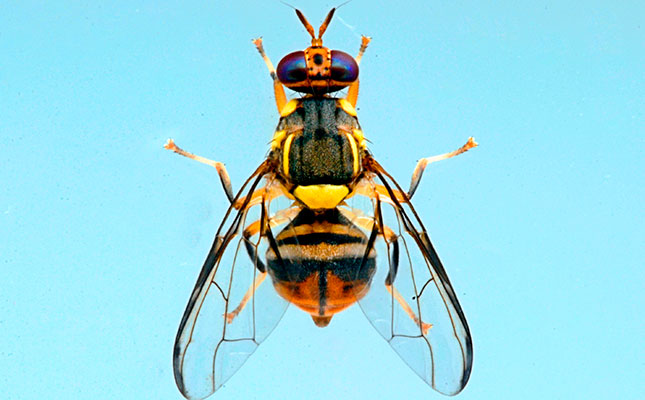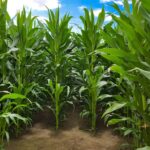The Oriental fruit fly, scientifically known as Bactrocera dorsalis, is a significant agricultural pest that poses a considerable threat to fruit production in South Africa and beyond. Here are 20 crucial aspects of this invasive species you should be aware of:
- Origins: The Oriental fruit fly is native to Asia and has spread to other parts of the world, including Africa, where it has become a notable pest in South Africa.
- Identification: Adult Oriental fruit flies are about 8 mm in length, with a distinctive yellow and black marking on their thorax and abdomen. The males can be identified by their transparent wings with a yellow and black banding pattern.
- Host Range: This pest has a wide host range, affecting over 230 different fruits and vegetables, including mangoes, guavas, bananas, and citrus fruits, making it a significant threat to a variety of crops in South Africa.
- Life Cycle: The Oriental fruit fly has a rapid life cycle that can be completed in as little as 16 days in optimal conditions, allowing populations to increase quickly.
- Reproduction: Females lay their eggs under the skin of fruit. A single female can lay up to 1,500 eggs in her lifetime, leading to rapid population growth.
- Damage: Larvae feed inside the fruit, causing it to rot and become unmarketable. This not only leads to direct economic loss but also affects food security.
- Economic Impact: The presence of the Oriental fruit fly can lead to significant economic losses due to reduced yield and quality of fruits, increased control costs, and loss of market access due to quarantine restrictions.
- Quarantine Pest: It is considered a quarantine pest in many countries, meaning that infested produce is not allowed to enter, which can severely impact export markets for South African fruit producers.
- Detection and Monitoring: Early detection and monitoring are crucial. This is often done through the use of pheromone traps to capture male flies.
- Integrated Pest Management (IPM): Management of the Oriental fruit fly involves an integrated approach, including cultural, biological, and chemical methods to minimize its impact.
- Cultural Controls: These include practices like removing and destroying infested fruits, which can help reduce the population of flies.
- Biological Control: This involves using natural enemies of the fruit fly, such as parasitoids, to control its population.
- Chemical Control: Insecticides are used as a last resort due to concerns about pesticide resistance and environmental impact.
- Sterile Insect Technique (SIT): This method involves releasing sterile males into the wild to reduce reproduction rates.
- Climate Change Impact: Changes in climate can affect the distribution and abundance of the Oriental fruit fly, potentially expanding its range and increasing its impact.
- Research and Development: Ongoing research focuses on developing more effective and sustainable management strategies, including the use of genetic engineering and improved attractants.
- Public Awareness: Educating farmers and the public about the Oriental fruit fly and its management is crucial for its control.
- Regulatory Measures: Governments have implemented strict quarantine and biosecurity measures to prevent the spread of the fly.
- Global Cooperation: International cooperation is necessary to manage the spread of the Oriental fruit fly, as it is a problem that crosses borders.
- Future Challenges: As global trade and climate patterns continue to change, the challenges posed by the Oriental fruit fly are likely to evolve, requiring ongoing vigilance and adaptation of management strategies.
The Oriental fruit fly is more than just a pest; it’s a significant challenge to the agricultural sector, requiring comprehensive strategies to manage its impact. Awareness, research, and cooperation are key to mitigating the threat it poses to South Africa’s fruit industry and ensuring the sustainability of agricultural practices in the face of such invasive species.








